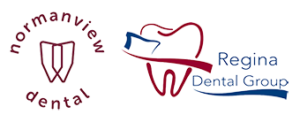Oral Health is so important because everyone wants to have a healthy smile! Having poor oral hygiene can lead to a variety of dental and medical problems. Some of these are gum disease, infection, bone loss, heart disease, strokes and more. Here are eight tips that dentists recommend for maintaining or improving your oral health.
Tip #1: Practice good brushing techniques
According to Colgate when you brush your teeth, you should use short, gentle strokes, paying extra attention to the gum line, hard-to-reach back teeth and areas around fillings, crowns or any other restorative surgery you may have had. Pay close attention to the outer surfaces of your upper and lower teeth, the inner surfaces, the chewing surfaces and your tongue.
Tip #2: Always remember to floss
When you don’t floss, you’re at risk for two major dental issues in your mouth, gingivitis and cavities between your teeth. You should floss at least once a day and the best time to do so is right before you go to bed to remove any food and plaque from between the teeth and along the gum line.
Tip #3: Stay away from tobacco
Not only is smoking linked to lung cancer, it can also create cardio-pulmonary problems, may lead to asthma, and takes a negative toll on your dental health. By smoking, your mouth becomes a breeding ground for bacteria. Smoking also may give you foul breath, delays the time it takes to heal from oral surgery, causes your teeth to become yellow, and increases your chances of getting oral cancer.
Tip #4: Reduce pop, coffee and alcohol consumption
Pop, coffee and alcohol can also have ill effects on your smile, potentially leading to cavities and more serious diseases like gingivitis and tooth decay. While moderate alcohol consumption can be part of a healthy lifestyle, alcohol isn’t generally considered healthy for your teeth or body. Beer for example is highly acidic (which wears down your tooth enamel), dark barley (the primary ingredient in most beers) stains your teeth, and the sugars in the pop and some alcoholic beverages encourages plaque and tartar buildup.
Tip #5: Consume vitamin rich foods that are good for your teeth
When it comes to the health of your teeth, you really are what you eat. Your diet makes a big difference when it comes to a healthy smile. Simple adjustments can be made to your diet such as adding more dark leafy greens like kale and spinach, consuming dairy products and adding more fibrous vegetables. Getting more vitamins and nutrients into your diet will not only stimulate your gums but also build your teeth’s enamel.
Tip #6: Use a mouthwash in conjunction with brushing and flossing
With a proper regime of brushing and flossing twice daily, mouthwash is the cherry on top that will make your dental health great. Some mouthwashes that contain chlorine dioxide are very helpful because they help to kill bacteria in your mouth. Mouthwash also maintains fresh breath and strong teeth. In fact, a new study published in a journal by the Academy of General Dentistry (AGD) showed that mouthwash might be more effective at reducing both plaque and gingivitis than brushing alone.
Tip #7: Maintain regular visits with your dentist
You may wonder why the Canadian Dental Association and your dentist recommend you come back every six months. It’s because regular dental visits are essential for the maintenance of healthy teeth and gums. In between those examinations, it’s important that you work to keep your teeth and gums clean and healthy by maintaining a proper oral care regimen (i.e. brushing at least twice daily, flossing, etc).
Tip #8: Brush your tongue
Brushing your tongue is an important factor in your oral care regime because bacteria buildup on your tongue can spread to your teeth, causing gingivitis, or red, inflamed gums. If it’s not treated, the inflammation can advance to periodontal disease. Think of your tongue as a sponge for bacteria. On average, there are approximately 700 different bacteria species living on your tongue. While not all of these microbes are detrimental to your health, if you allow them to breed, they can cause damage which is much more severe than bad breath.
